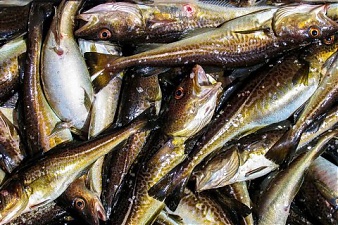Agriculture, Estonia, Legislation, Markets and Companies
International Internet Magazine. Baltic States news & analytics
Wednesday, 07.01.2026, 18:55
Most Baltic Sea fish species important for Estonia safe to eat
 Print version
Print version |
|---|
The fish species covered by the survey are the industrially harvested species Baltic herring and sprat, as well as common flounder, perch, giant perch, salmon, and river lamprey that are important in coastal fishing.
In most of the fish species examined the content of polluting substances was smaller than the permitted maximum level.
However, in wild salmon and river lamprey contents of pollutants in excess of valid norms were found. Since the two said fish species are seldom used for food by Estonians, the risk for the health of residents posed by these species is almost non-existent.
Minister of the Environment Rene Kokk said that the state must continue work to reduce the amounts of pollutants ending up in the surrounding environment, to make sure that it will be possible to consume wild fish for food also in the future.
"Large industrial and combustion processes, which have been made significantly more efficient now, used to be the largest sources of dioxins and heavy metals earlier. Insufficient sorting of waste, burning of garbage in bonfires and by households, and insufficient treatment of rainwater, as a result of which too big amounts of pollutants end up in bodies of water, continue to be a cause for concern, however," the minister said.
Marek Nurmik, chief specialist at the department for environmental and analytical chemistry at the Estonian Center for Environmental Research, said that the presence of dioxins and dioxin-like polychlorinated biphenyls (PCBs) in excess of the valid norms was detected in one-third of the wild salmons analyzed. The presence of cadmium meanwhile was higher than permitted in as much as 90 percent of the river lampreys examined.
The presence of cadmium did not pose a problem with any other of the fish species analyzed.
When it comes to Baltic herring, Estonia, according to Nurmik, should seek an exception from the European Commission to enable unsorted Baltic herring including specimens bigger than 17 centimeters in length to be sold here, as the dioxin levels in such specimens do not exceed valid food safety norms.
According to the findings of the study, the recommendations concerning the consumption of Baltic Sea fish as food are influenced the most by high contents of dioxins and dioxin-like PCBs.
In order for dioxins to not pose a heath risk, it is recommended to eat wild sprats or Baltic herring no more than respectively 40 or 60 grams a week, no more than 100 grams of perch or giant perch, and no more than 52 grams of common flounder per week. The recommended maximum amounts are smaller still for wild salmon and river lamprey -- respectively 20 grams and 25 grams a week.
At the same time, it has to be remembered, according to Nurmik, that the nutrition recommendations made stricter by the European food safety authority in 2018 are based on the principle that the norms must protect also the most vulnerable groups of the population, such as pregnant women, breastfeeding mothers, and infants. The amounts shown in the recommendations are for a person weighing 70 kilograms.
"Therefore, one should not be afraid of eating fish, especially considering that compared with the rest of the world and countries of the European Union relatively small amounts of fish are consumed as food in Estonia anyway," Nurmik said.
The food safety study of Baltic Sea fish species was conducted in Estonia from 2018-2020.
- 28.01.2022 BONO aims at a billion!
- 30.12.2020 Накануне 25-летия Балтийский курс/The Baltic Course уходит с рынка деловых СМИ
- 30.12.2020 On the verge of its 25th anniversary, The Baltic Course leaves business media market
- 30.12.2020 Hotels showing strong interest in providing self-isolation service
- 30.12.2020 EU to buy additional 100 mln doses of coronavirus vaccine
- 30.12.2020 ЕС закупит 100 млн. дополнительных доз вакцины Biontech и Pfizer
- 29.12.2020 В Латвии вводят комендантский час, ЧС продлена до 7 февраля
- 29.12.2020 Latvia to impose curfew, state of emergency to be extended until February 7
- 29.12.2020 Президент Литвы утвердил бюджет 2021 года
- 29.12.2020 В Риге можно изолироваться в трех гостиницах








 «The Baltic Course» Is Sold and Stays in Business!
«The Baltic Course» Is Sold and Stays in Business!

